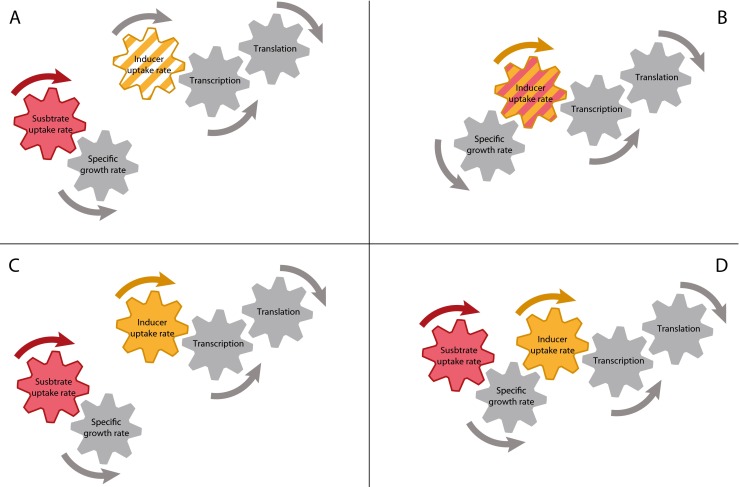Fig. 3.

For expression tuning, several induction strategies have been used. One-point addition of non-metabolizable inducer (a) is commonly applied, but provides no novel degree of freedom for process control. The inducer concentration is only added at the timepoint of induction and not adjusted throughout the process. It is therefore submitted to change due to catabolism, dilution by growth, and inactivation. By inducer titration, the inducer concentration is continuously added to the culture and concentration changes can therefore be accounted for. When using a metabolizable inducer for inducer titration (b), the specific growth rate and the protein expression cannot be controlled individually as the inducer acts as substrate as well. Independent control of specific growth rate and protein expression rate and therefore a novel degree for process control is gained when performing inducer titration with non-metabolizable inducers (c). In this case, addition of substrate controls the specific growth rate and addition of inducer controls the induction rate. Another way to retain this novel degree of freedom is to use metabolizable inducers in a mixed-feed environment (d). Here, specific growth rate is controlled by addition of main substrate and inducing substrate and induction rate is controlled by the ratio of inducing substrate to main substrate. For reasons of easier comprehensibility, the overall influence of specific growth rate on protein expression is not illustrated in this graphic representation
